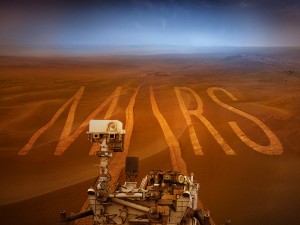
by weliz | Jan 16, 2017 | Putting it Out There

Photo credit: AGU
The best thing that I saw at the AGU 2016 Fall Meeting was the Sagan Lecture by Nathalie Cabrol entitled, “The co-evolution of life and environment and the astrobiological quest.” Like many earth scientists, I often fantasize about applying my current research extreme environments and even to other planets; asking what was the carbon cycle like on a living Mars and how might that organic material have been preserved? But what should we be looking for?
Nathalie’s talk was about asking what type of microbial life inhabited Mars based on past Martian environmental conditions, where on Mars that life might have been active, how long this life was active on the Martian surface, and where might that life have gone when Mars became increasingly uninhabitable (deeper into the subsurface?). The last three questions would point to the places that future missions should go in search of life.
As the role of microbes in carbon cycling in soils including its necromass input of organic matter to soils becomes increasingly important on Earth, this talk inspired me to think more about how environmental/physical stress might affect both necromass production and the physical and chemical stabilization of necromass in the soil.
~Liz Williams

by weliz | Jan 11, 2017 | Life in the Lab
Hi all!
I am extremely excited to be the latest addition to Prof. Plante’s lab (and thrilled about the new Netzsch autosampler); we have been planning this collaboration since first meeting at AGU (American Geophysical Union Fall Meeting) in 2013. At that time, I was a Ph.D. candidate Tulane University with Prof. Brad Rosenheim. My research focused on using thermal analyses and coupled radiocarbon and isotopic analyses to characterize organic matter stability in coastal soils and sedimentary deposits. After completing my Ph.D. the following year, I began a postdoctoral research position at the University of California – Merced with Prof. Marilyn Fogel. My research grew to focus on using hydrogen and carbon isotopes to trace inputs and subsequent storage of organic matter in forest soils, characterize dynamics of physical and chemical stabilization, as well as address the potential of soil organic matter in recording climate (precipitation) signals. Now, finally, as a postdoc at the University of Pennsylvania through a fellowship from the Office of the Vice Provost for Research, I am excited to continue researching mechanisms controlling organic matter stability and storage in soils, specifically, mineral interactions, effects of biochar/black carbon addition, and microbial impacts as well as improving our understanding of thermal analyses as they relate to particulate organic matter cycling.
~Liz Williams




Recent Comments